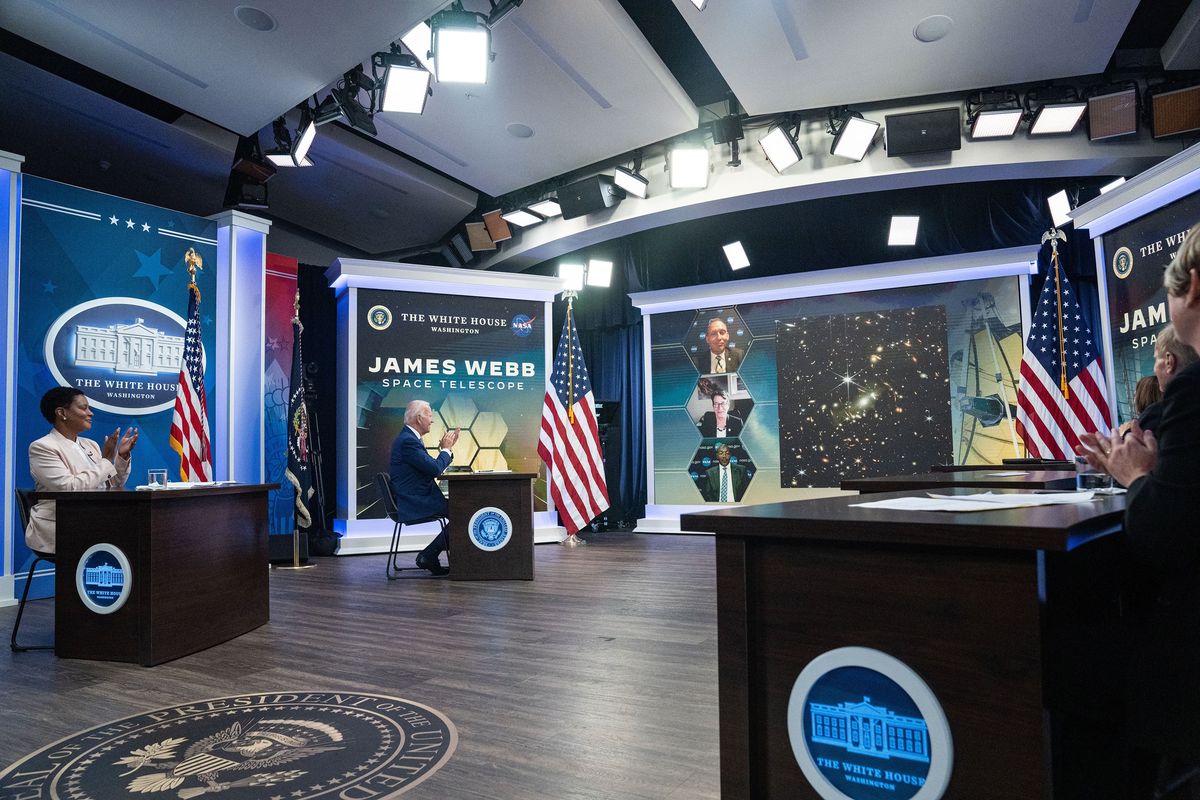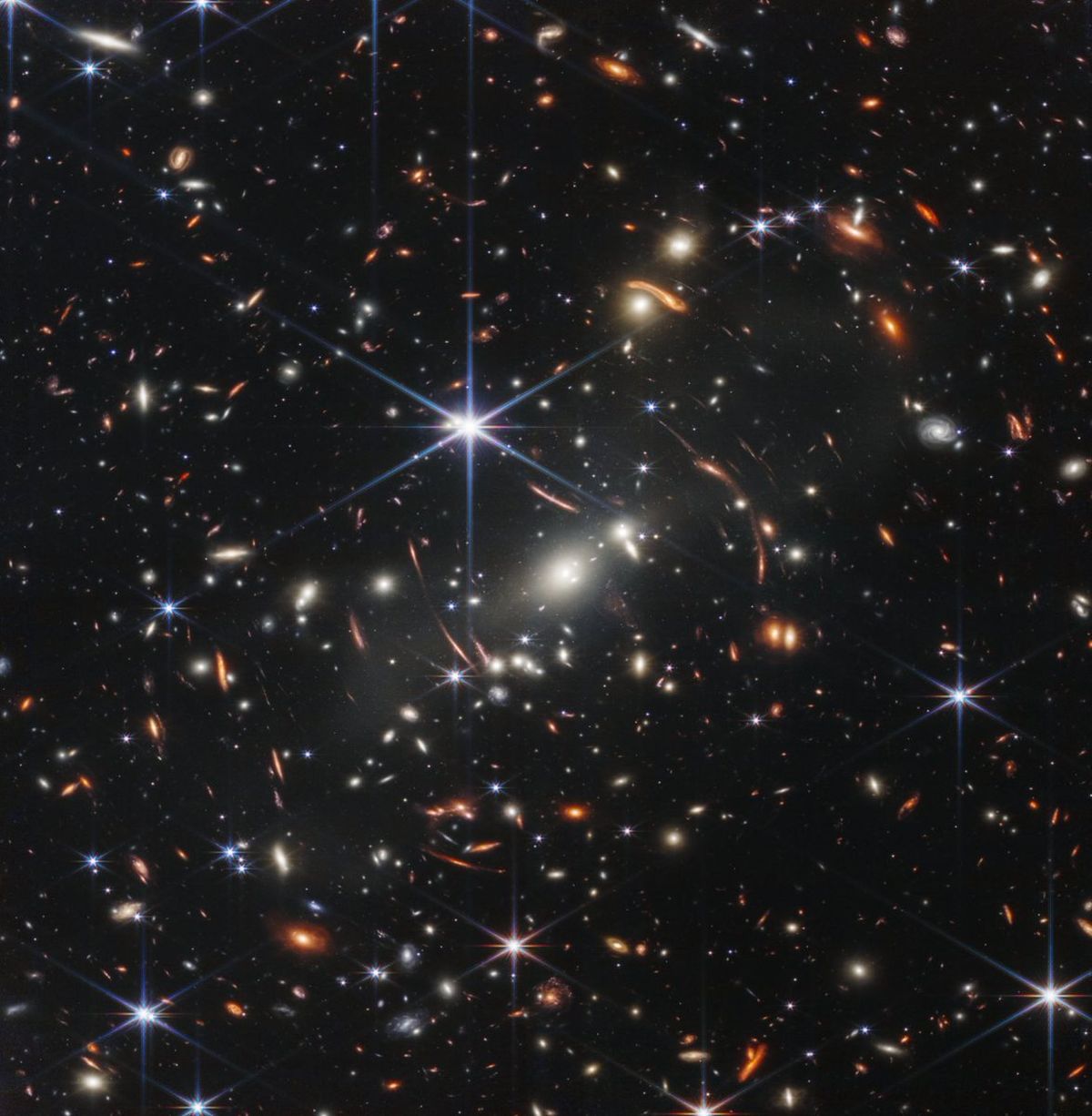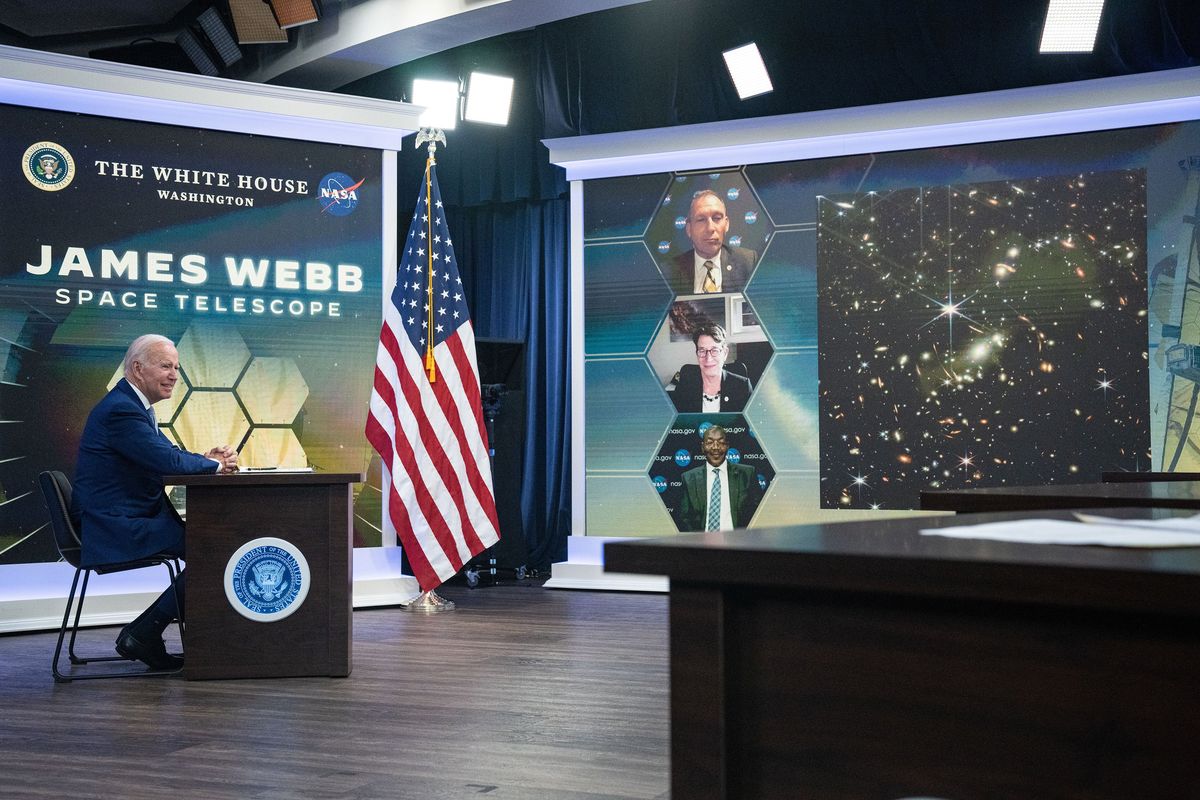Biden and NASA share first Webb deep-space image
The James Webb Space Telescope captured this image of deep space that was revealed to the public during a briefing with NASA and President Joe Biden at the White House. Objects in the image are 13 billion years old; the universe is estimated to be 13.7 billion years old. (NASA)
In a brief event at the White House on Monday evening, President Joe Biden unveiled an image that NASA and astronomers hailed as the deepest view yet into our universe’s past.
The image, taken by the James Webb Space Telescope – the largest space telescope ever built – showed a distant patch of sky in which fledgling galaxies were searing their way into visibility just 600 million years after the Big Bang.
The president praised NASA for its work that enabled the telescope and the imagery it will produce.
“We can see possibilities no one has seen before,” he said, “we can go places no one has gone before.”
Biden’s announcement served as a teaser for the telescope’s big cosmic slideshow coming on Tuesday morning, when scientists reveal what the Webb has been looking at for the past six months.
For Biden, the reveal of the images was also a chance to engage directly with an event that will almost certainly stir wonder and pride among Americans – at a time when his approval ratings have plummeted as voters recoil at high food and gasoline prices and Democrats question his ability to fight for gun control and abortion rights.
One of the most ambitious of the Webb telescope’s missions is to study some of the first stars and galaxies that lit up the universe soon after the Big Bang almost 14 billion years ago. Although Monday’s snapshot did not quite provide that, it proved the principle of the technique and hinted at what more is to come from the telescope’s scientific instruments, which astronomers have waited decades to bring online.
As the telescope “gathers more data in the coming years, we will see out to the edge of the universe like never before,” said Priyamvada Natarajan, of Yale University, an expert on black holes and primeval galaxies, in an email from India,
She added, “It is beyond my wildest imagination to be alive when we get to see out to the edge of black holes, and the edge of the universe.”
Bill Nelson, the former Florida senator selected to lead NASA, touted the telescope’s scientific potential at the White House event.
“We are going to be able to answer questions that we don’t even know what the questions are yet,” he said.




